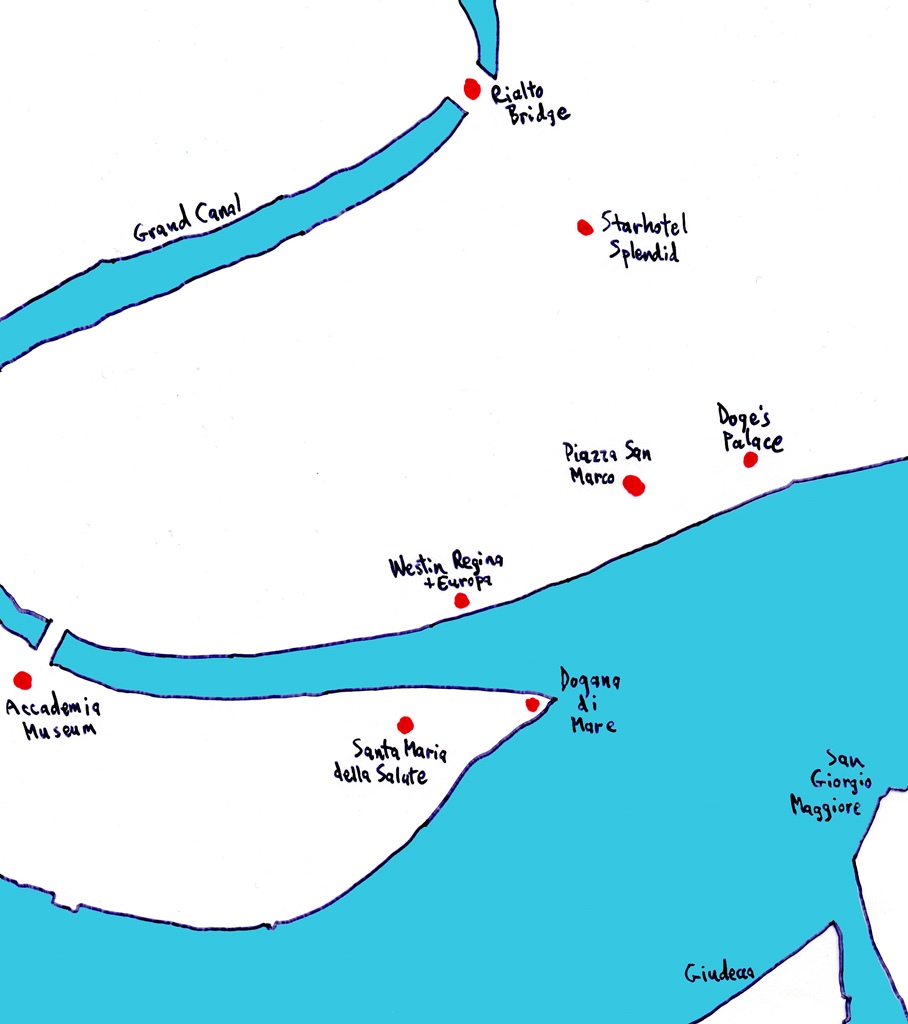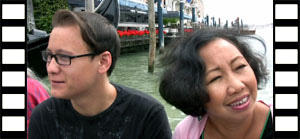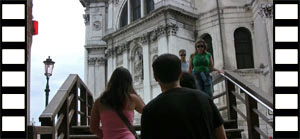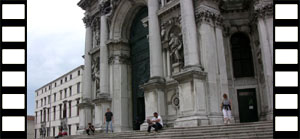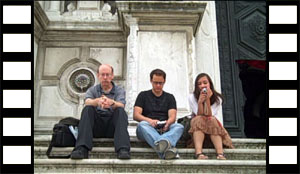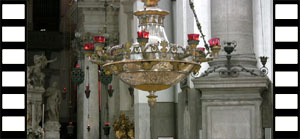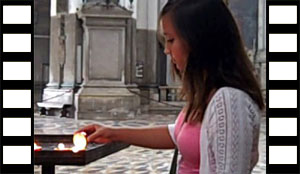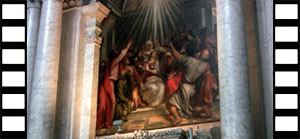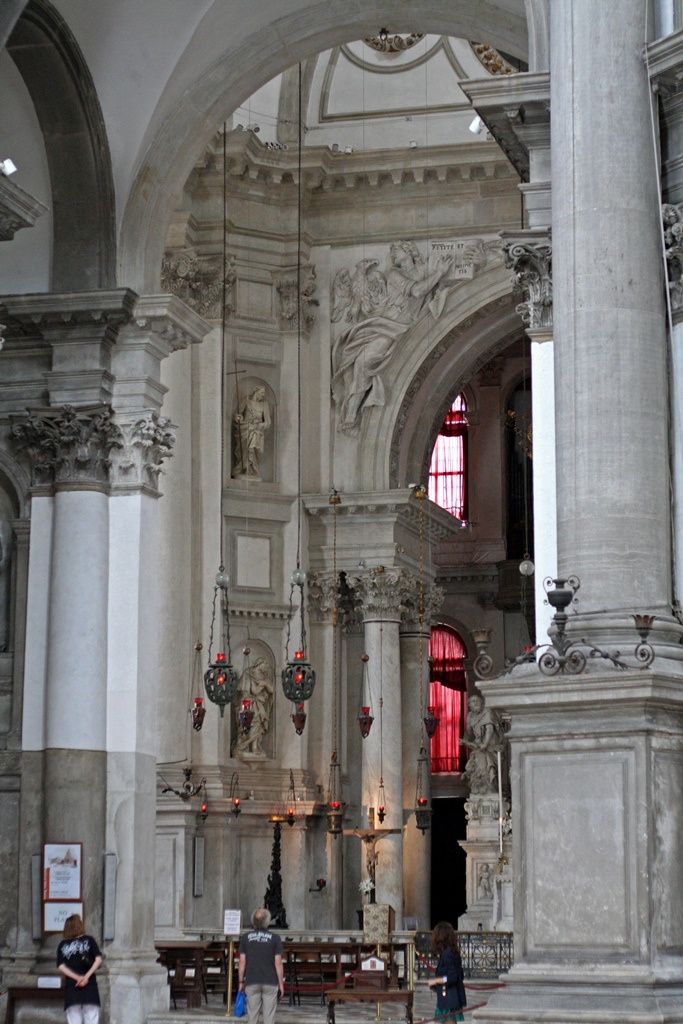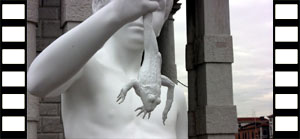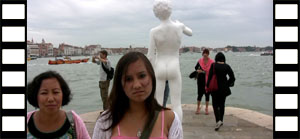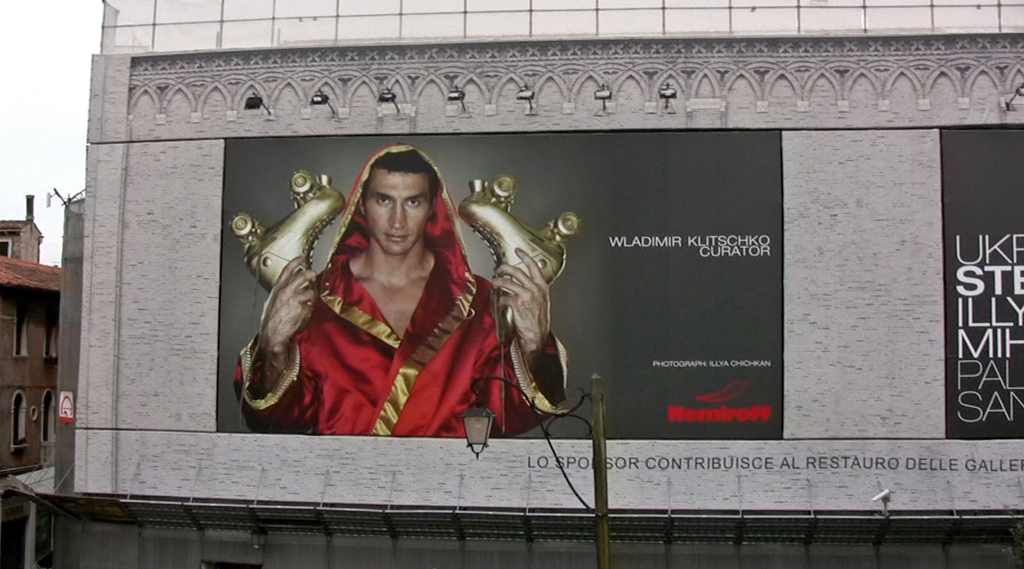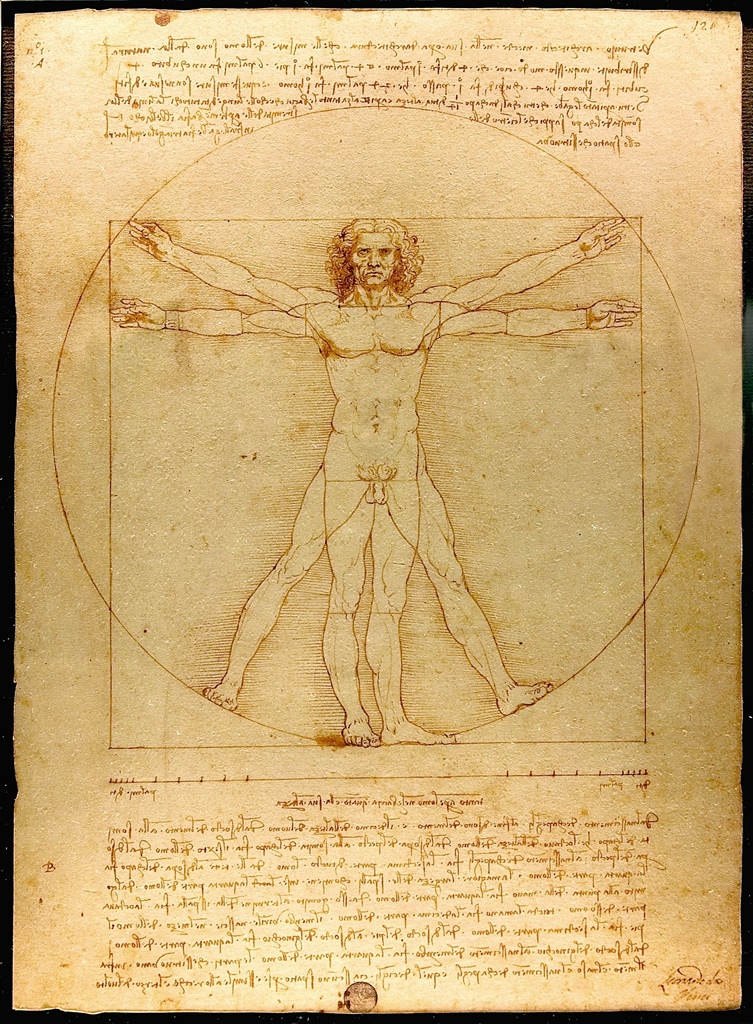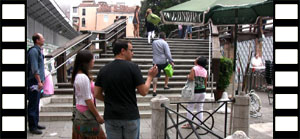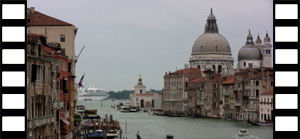Venice Landmarks
The next morning we found another coffee-and-croissant place which was slightly
larger than the one we'd found the previous morning, but which had pretty much the
same menu. But at least this one had a few stools to sit on for the short time
needed to consume breakfast. Then we linked up with Philip and Connie, who were
looking forward to walking off their massive breakfast. Our plan was to explore
the area across the Grand Canal from the Westin hotel, but there was a slight
problem. Away from the train station area, there are only two bridges across the
Grand Canal. One is the Rialto Bridge, a considerable backtrack from our intended
destination, and the other is the Accademia Bridge, closer to us but still out of
the way. Since there are only two bridges across the canal, this is a common
predicament, and Venetian enterprise has come to the rescue with the
traghetti. The traghetti are gondolas in strategic locations which are
used exclusively as passenger ferries. One wishing to cross the canal pays a
small fee and is paddled across, either sitting or standing, along with what is
usually a small group of other people with the same intent. We found a traghetto
near the Santa Maria del Giglio vaporetto stop and took the ride. Interestingly,
one of the two boatmen didn't want us to take any pictures of him, for unknown
reasons.
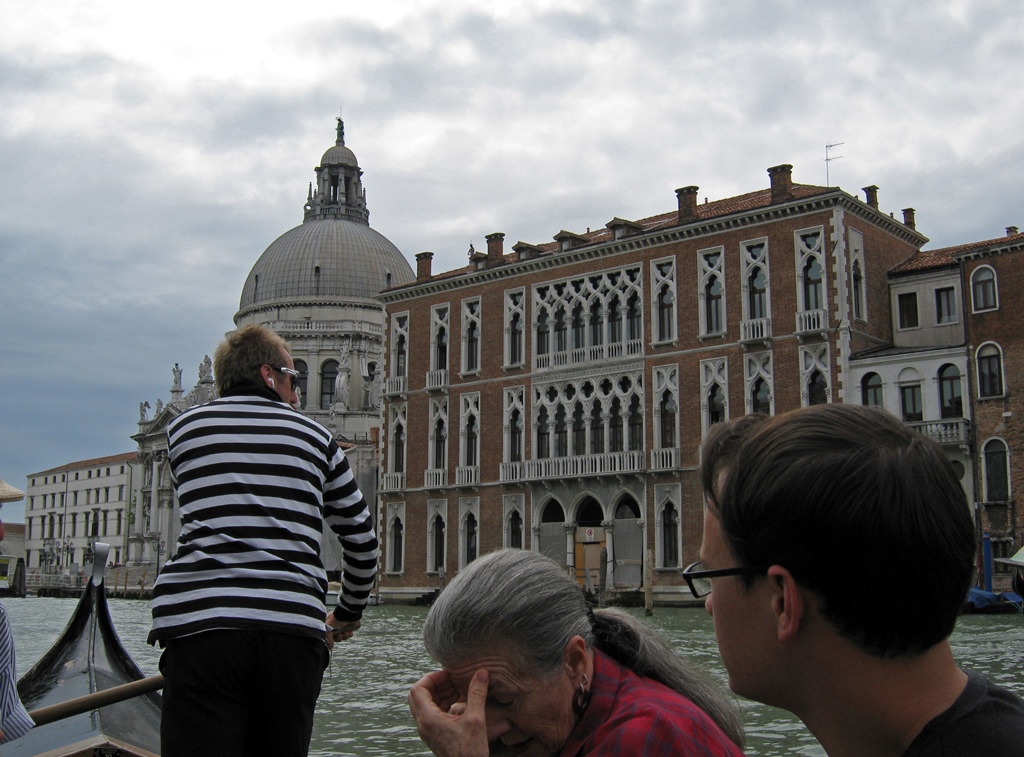
Traghetto Ride

Traghetto Ride
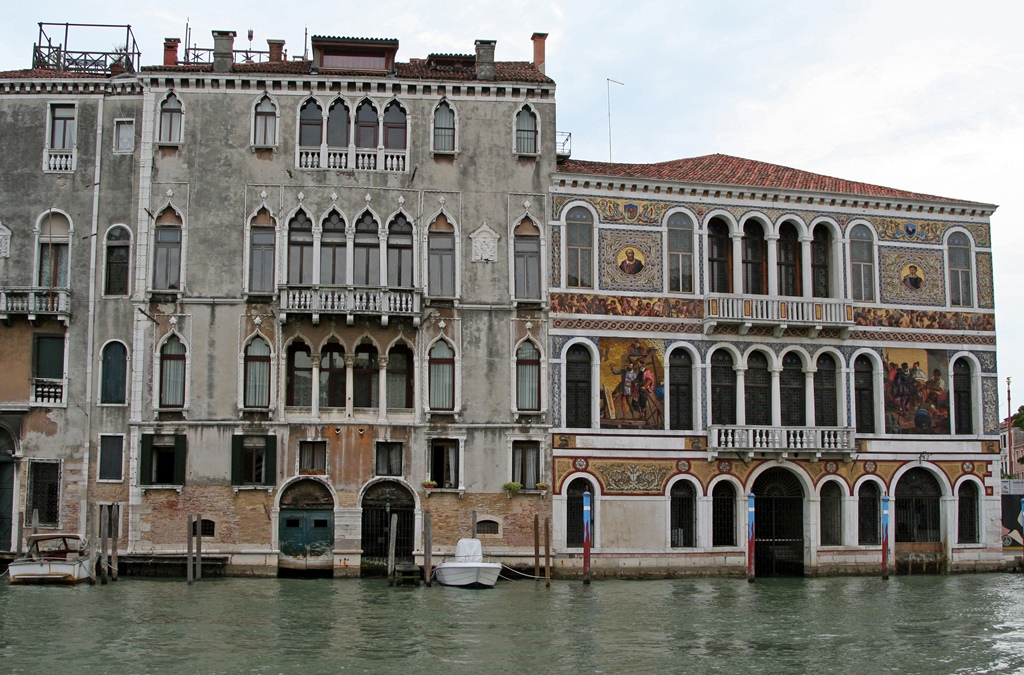
Palazzo Barbarigo
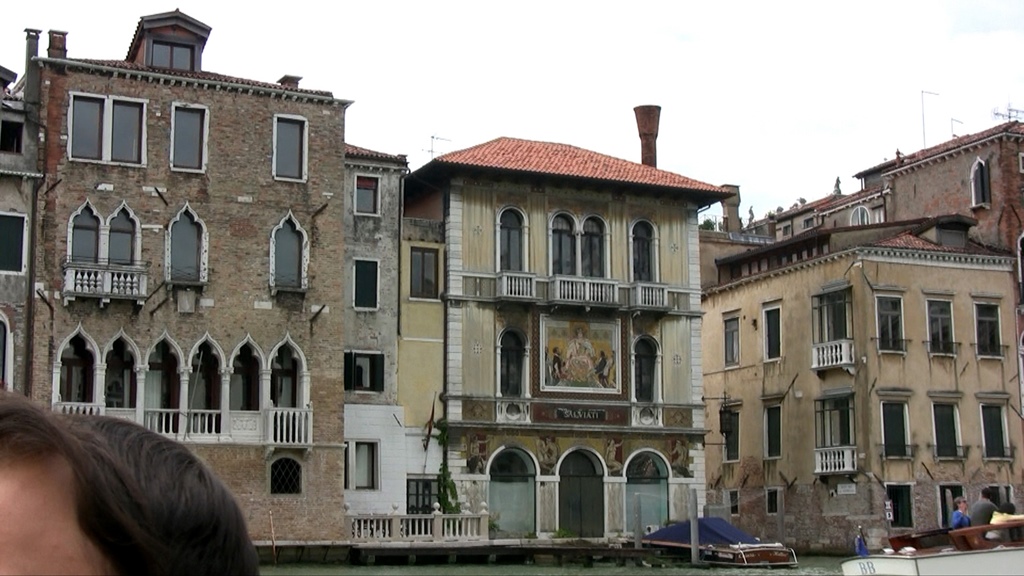
Palazzo Salviati
We disembarked a short walk from the Santa Maria della Salute church, our first
destination.
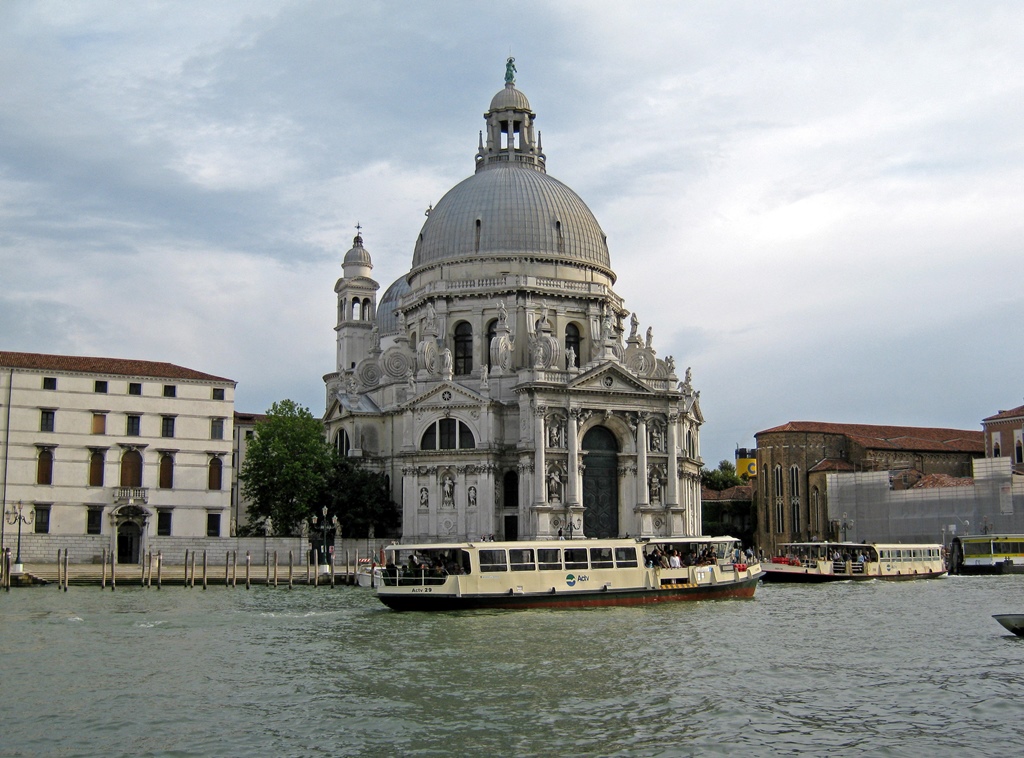
Santa Maria della Salute

Approaching Santa Maria della Salute
The Santa Maria della Salute church is a large domed church which is a major landmark
near the seaward entrance to the Grand Canal. It was built to give thanks for the
end of a plague which had wiped out nearly a third of the city's population in
1629-30. It was built from 1631-1687, octagonal in shape and baroque in style.
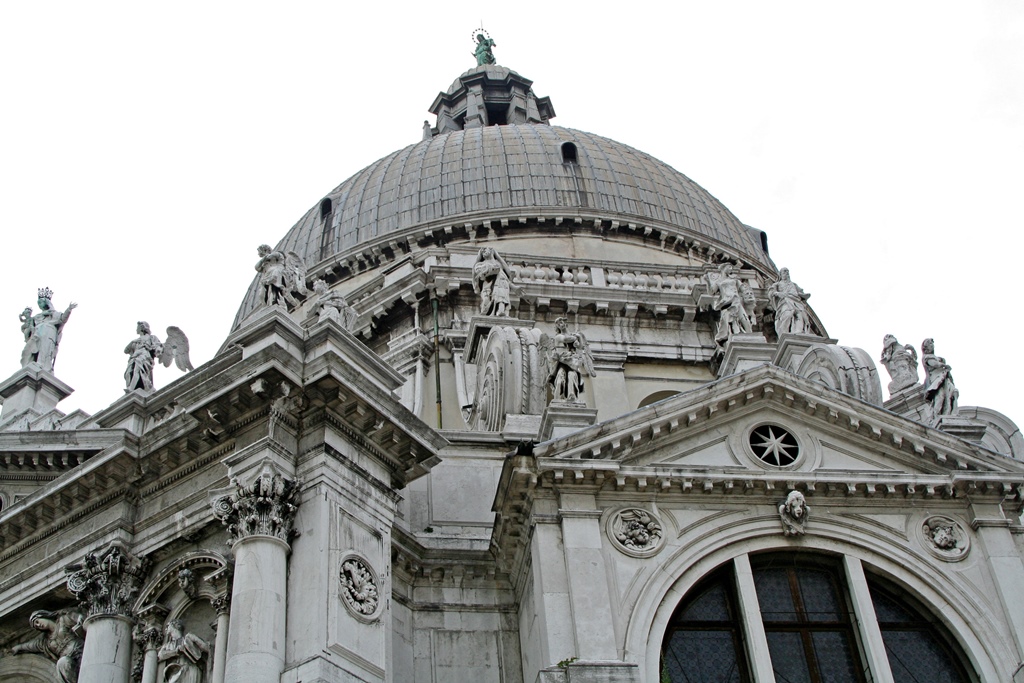
Santa Maria della Salute
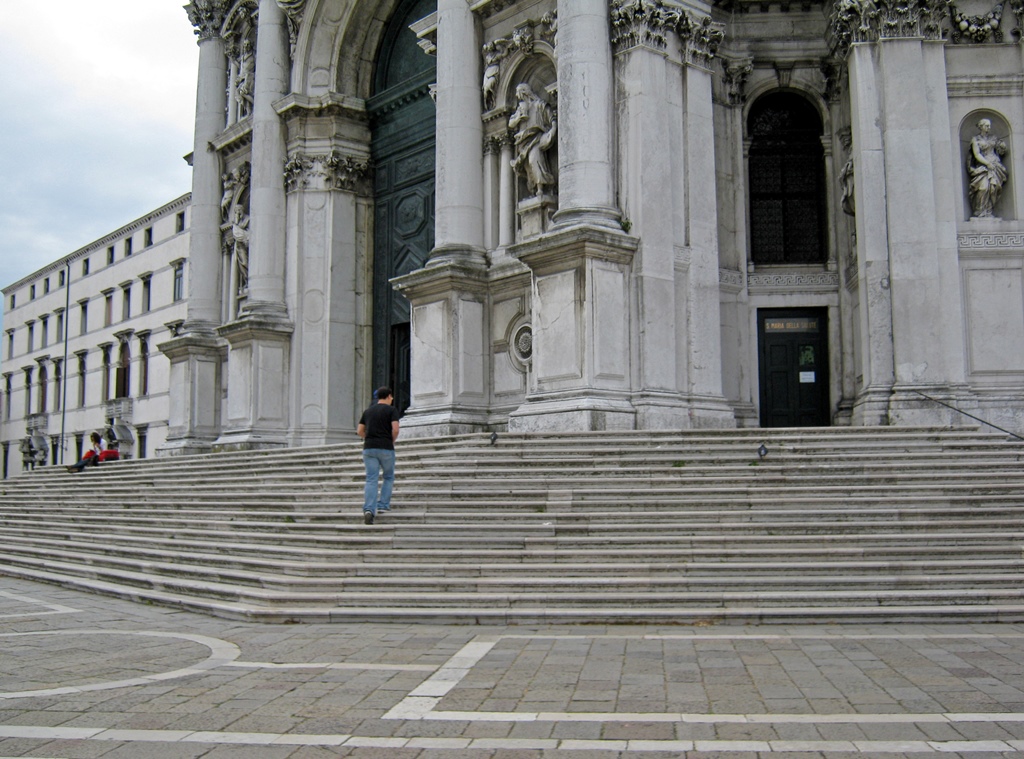
Philip Climbing Stairs
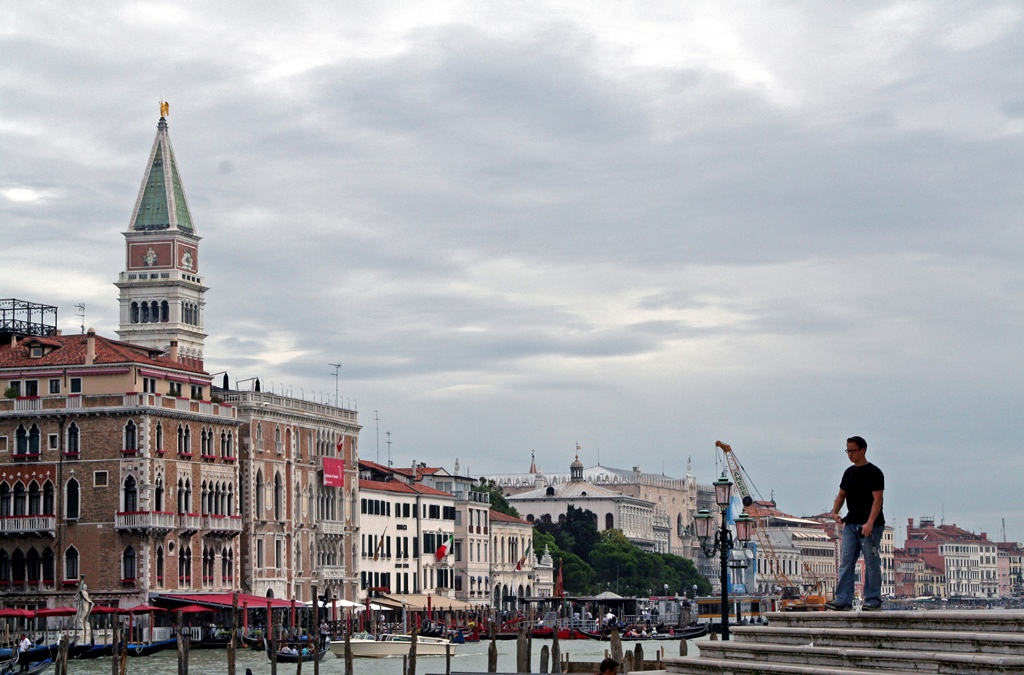
Philip and View Across Canal

Santa Maria della Salute
Family on Stairs
A number of artworks can be seen inside, by artists including Titian and
Tintoretto. The statuary group at the high altar is considered to be the
masterpiece of Giusto Le Corte and is called Virgin and Child Expelling
the Plague. It depicts Venice as a beautiful young woman and the plague
as an ugly old woman being thuggishly driven away by a cherub.
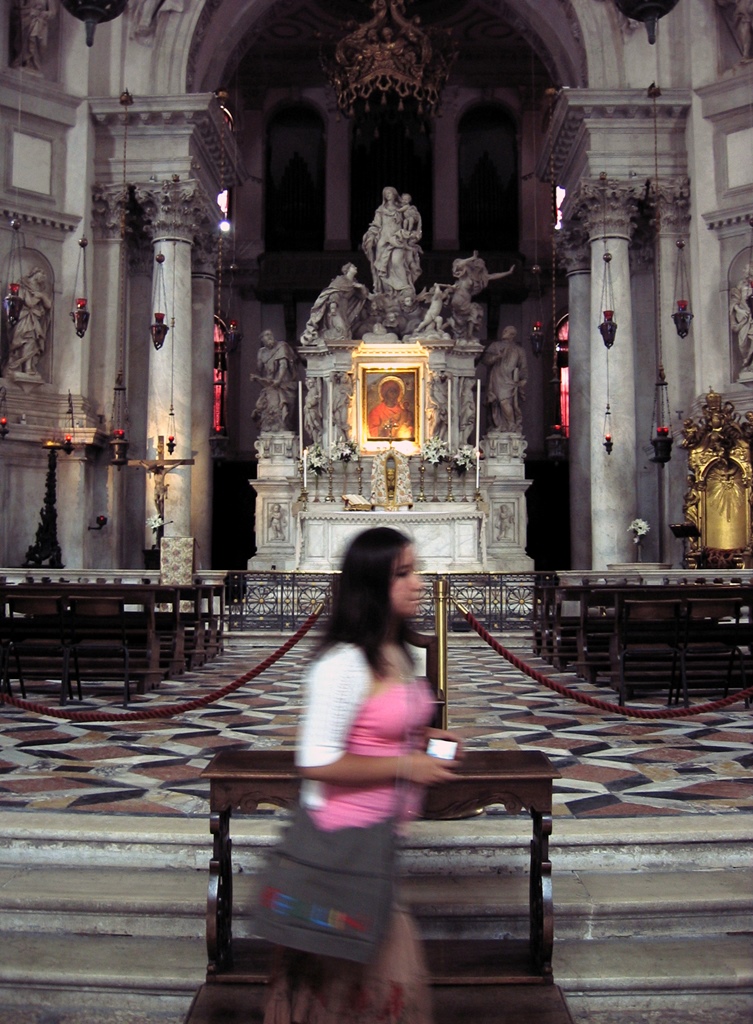
Connie and Main Altar
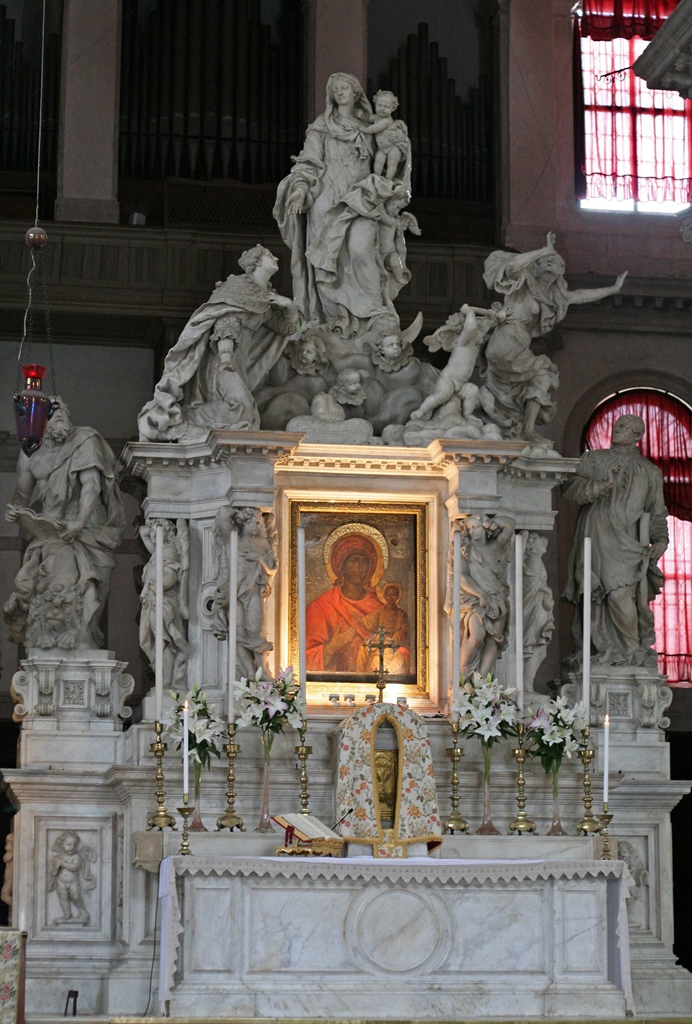
Virgin and Child Expelling the Plague, Giusto Le Corte (1670)

Main Altar, Painting and Dome Interior

Connie Lighting Candle

Floor and Front Door
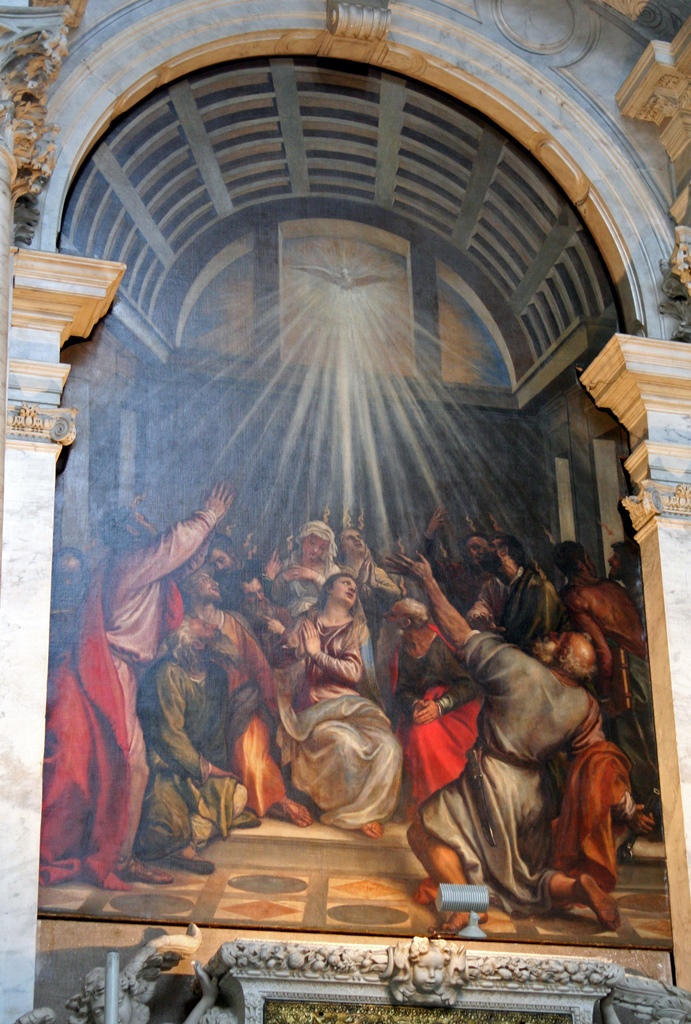
The Descent of the Holy Ghost, Titian (ca. 1545)

Altar of the Descent of the Holy Ghost
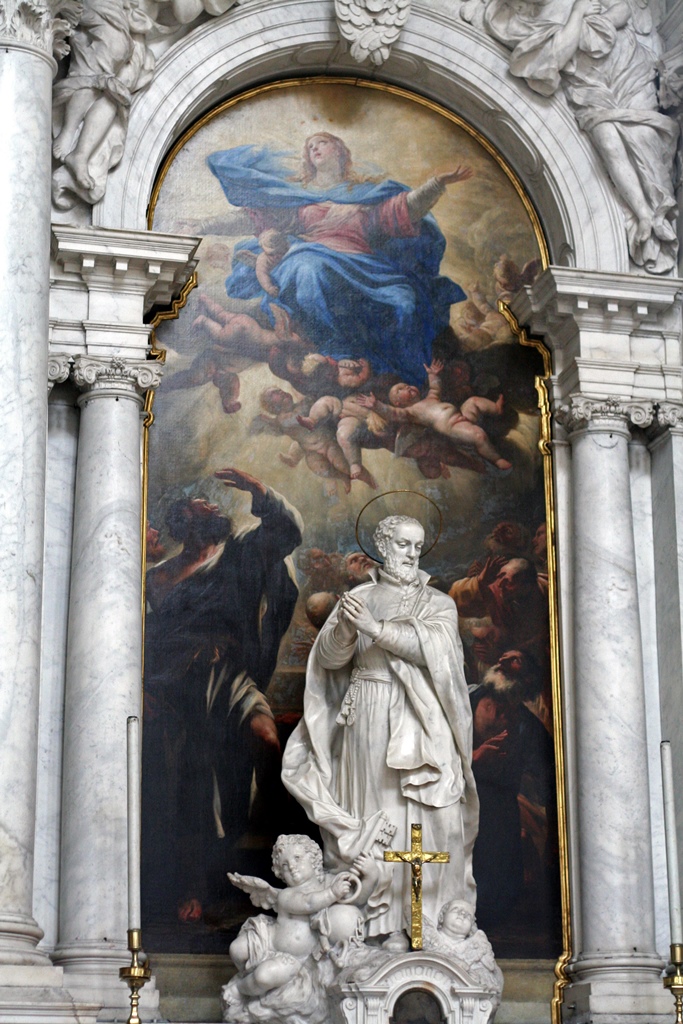
Altar of Our Lady of the Assumption, Luca Giordano (1667)
Inside the Church
From Santa Maria della Salute, we continued to the point of land at the
Dogana di Mare, the former customs house for ships arriving from the
sea and the beginning of the Grand Canal. From this point one can see San
Marco and the islands of San Giorgio Maggiore and Giudecca, and we also had
a nice view of our hotel. On our visit, for some reason there was also a
white statue of a naked boy holding a frog by its hind leg. Posted nearby
was a guard to deter any unsavory ideas which may have occurred to the
mischievous.
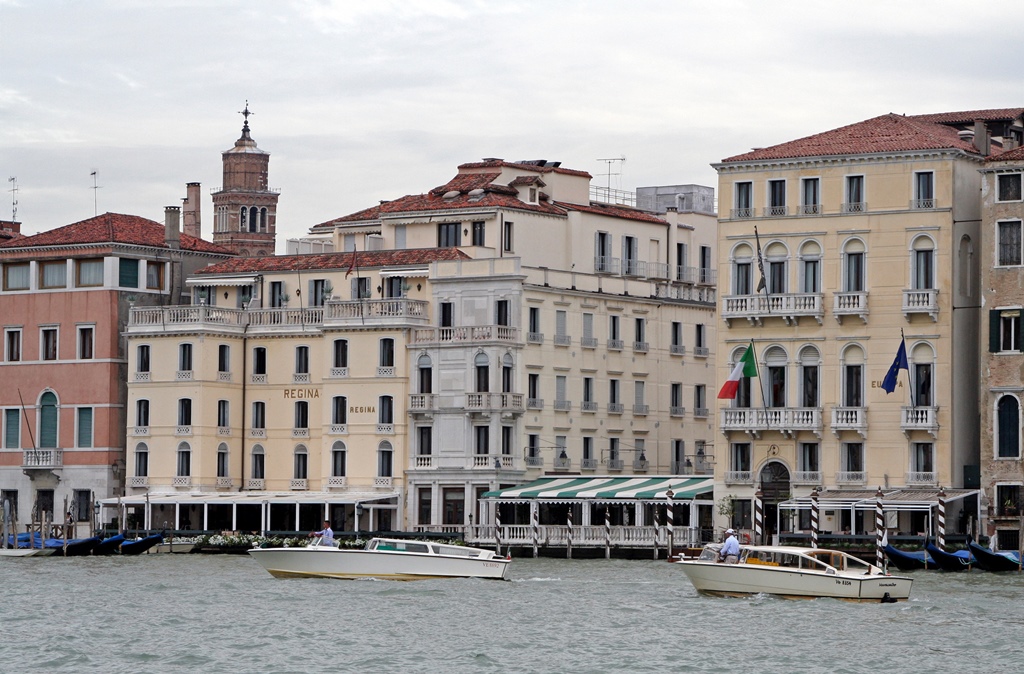
Westin Regina & Europa Hotel
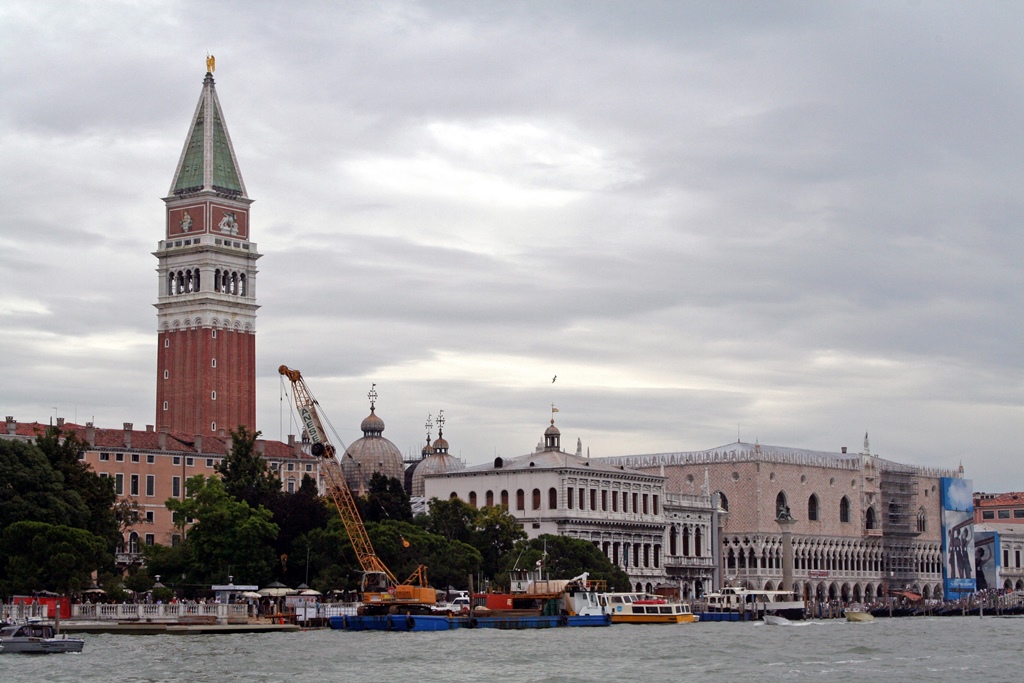
Campanile and Doge's Palace
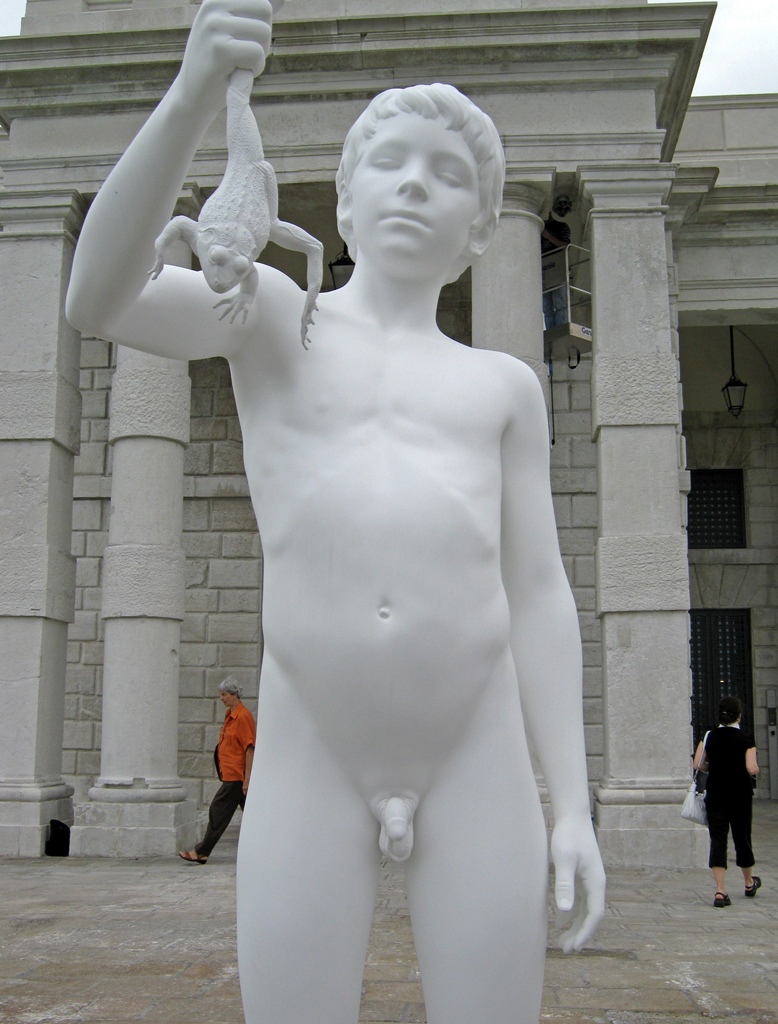
Naked Boy Statue

Naked Boy Statue and Weathervane
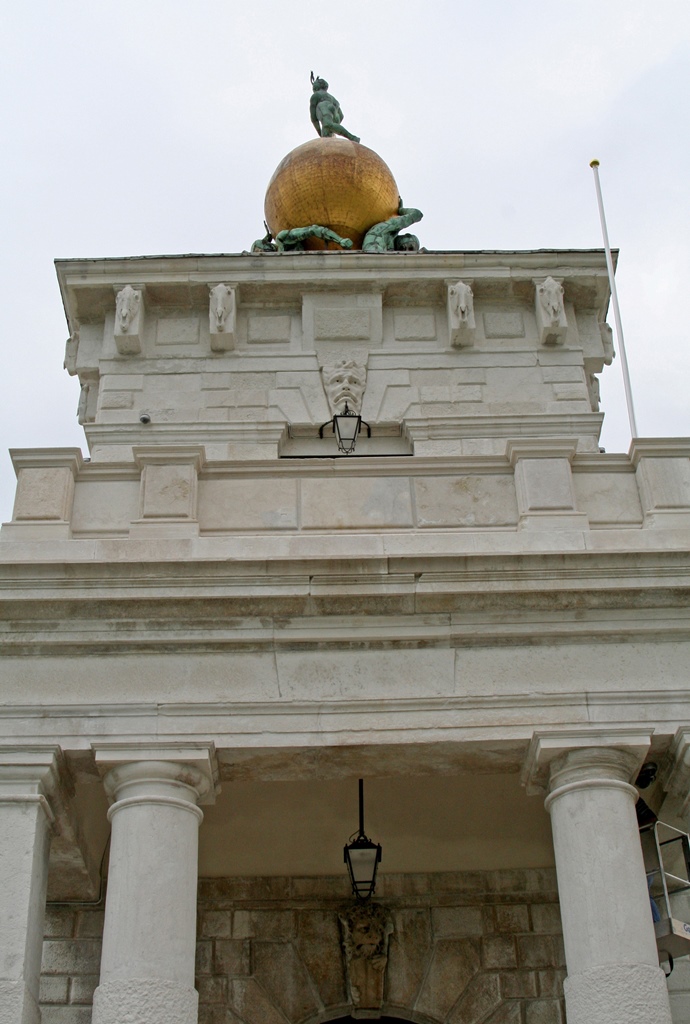
Dogana di Mare Weathervane

View from Dogana di Mare
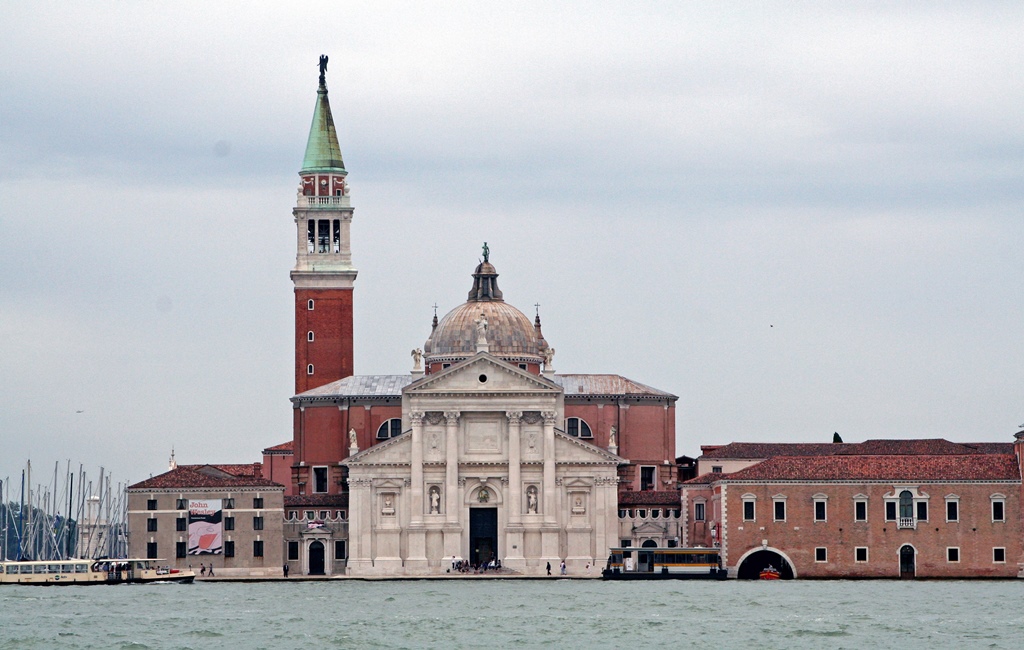
San Giorgio Maggiore
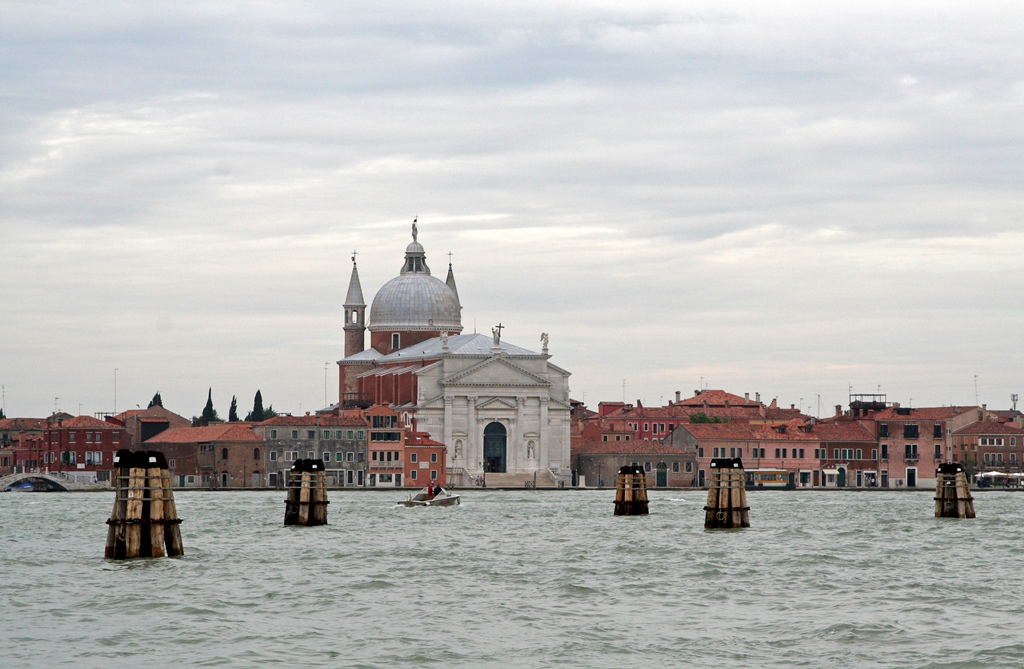
Il Redentore Church, Giudecca
Our next destination on this side of the canal was the Accademia Gallery, the world's
largest collection of Venetian art. Artists represented include Tintoretto, Titian,
Canaletto, Carpaccio, Veronese and Tiepolo, among many others. Photography was
forbidden inside the museum, so here are some pictures that mostly came off the
Internet:
Accademia Gallery Building
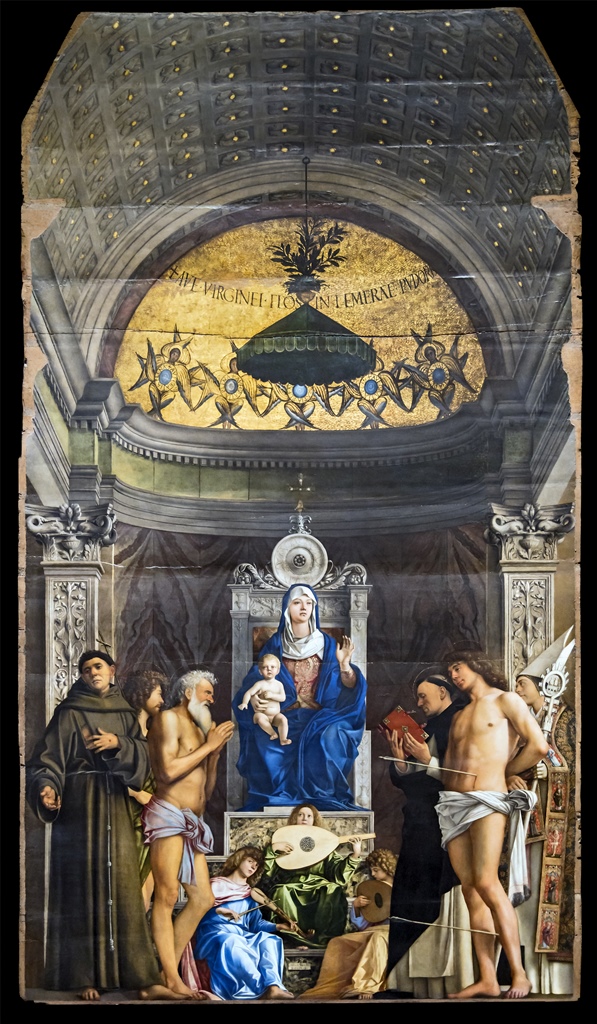
San Giobbe Altarpiece, Giovanni Bellini (ca. 1487)
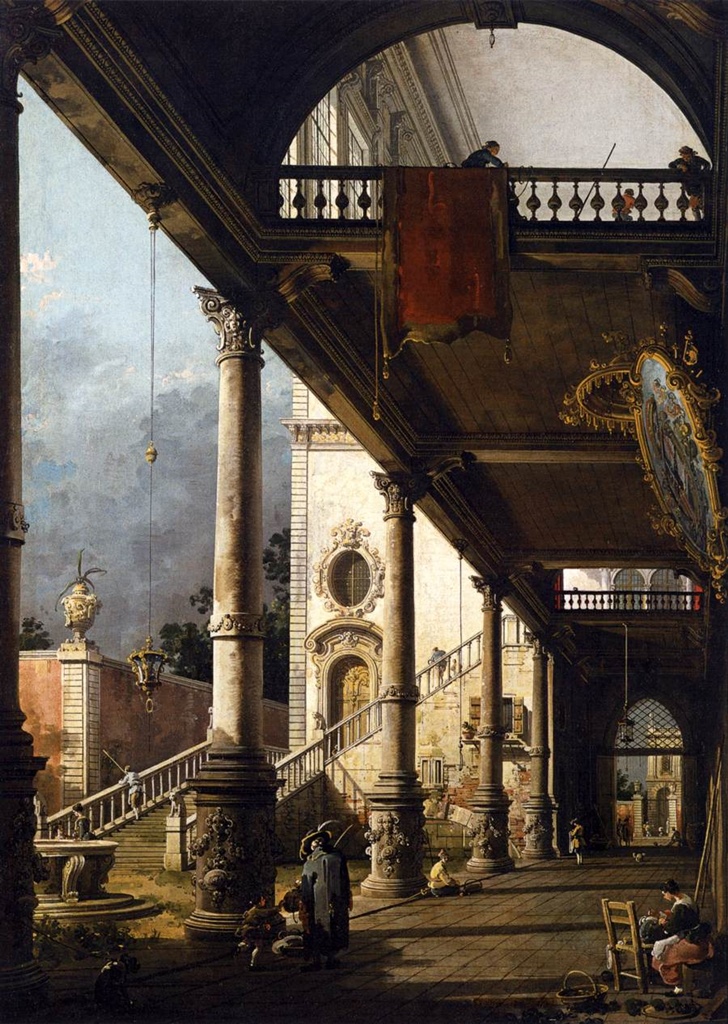
Perspective View with Portico, Canaletto (1765)
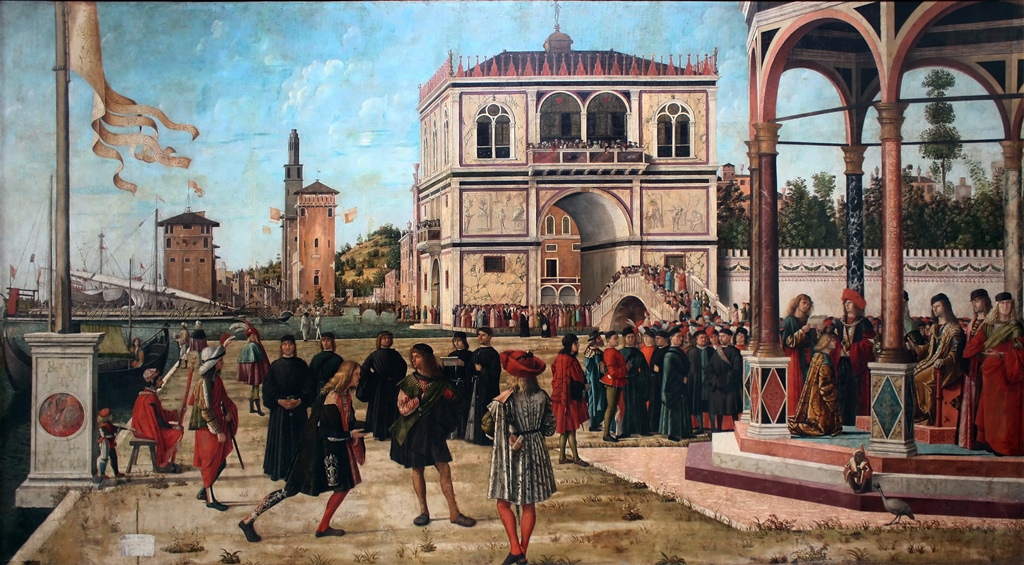
Cycle of St. Ursula, Vittore Carpaccio (1495-1500)
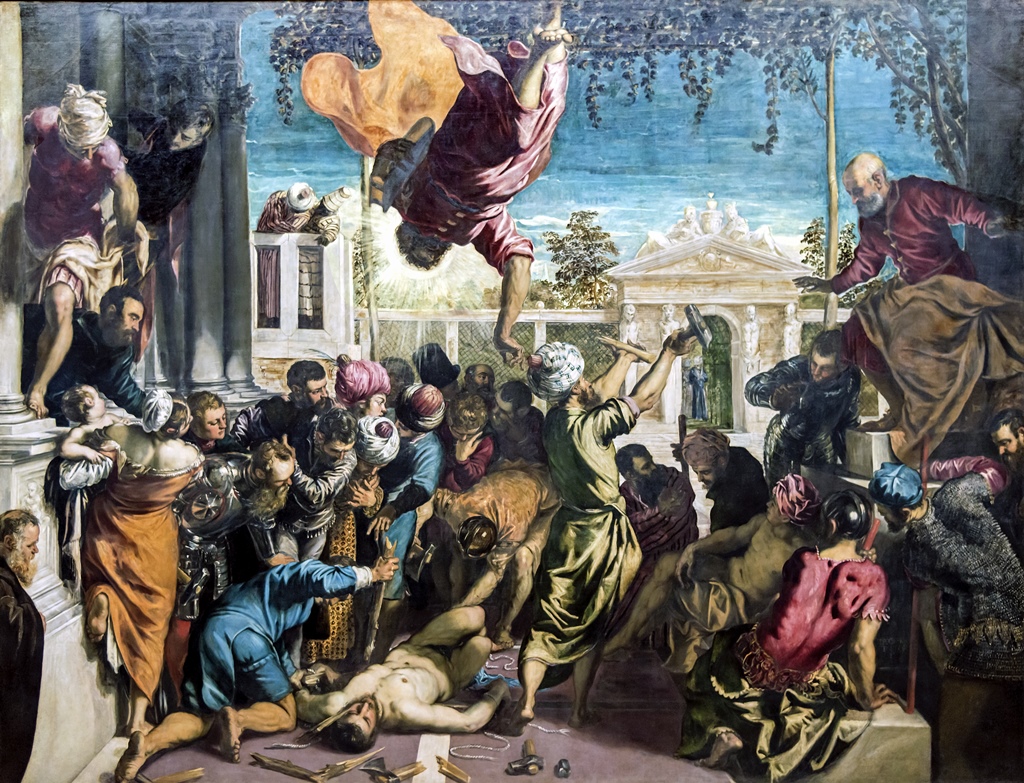
Miracle of the Slave, Tintoretto (1548)
The Accademia Gallery is also the home of Leonardo da Vinci's famous Vitruvian Man
drawing, but due to its fragility, it usually isn't on display.
Vitruvian Man, Leonardo da Vinci (ca. 1492)
Just outside the museum was the Accademia Bridge, which looks impressive in its own
right and is a nice spot to take pictures from. It was also the only remotely nearby
footbridge back to the side of the canal we came from.
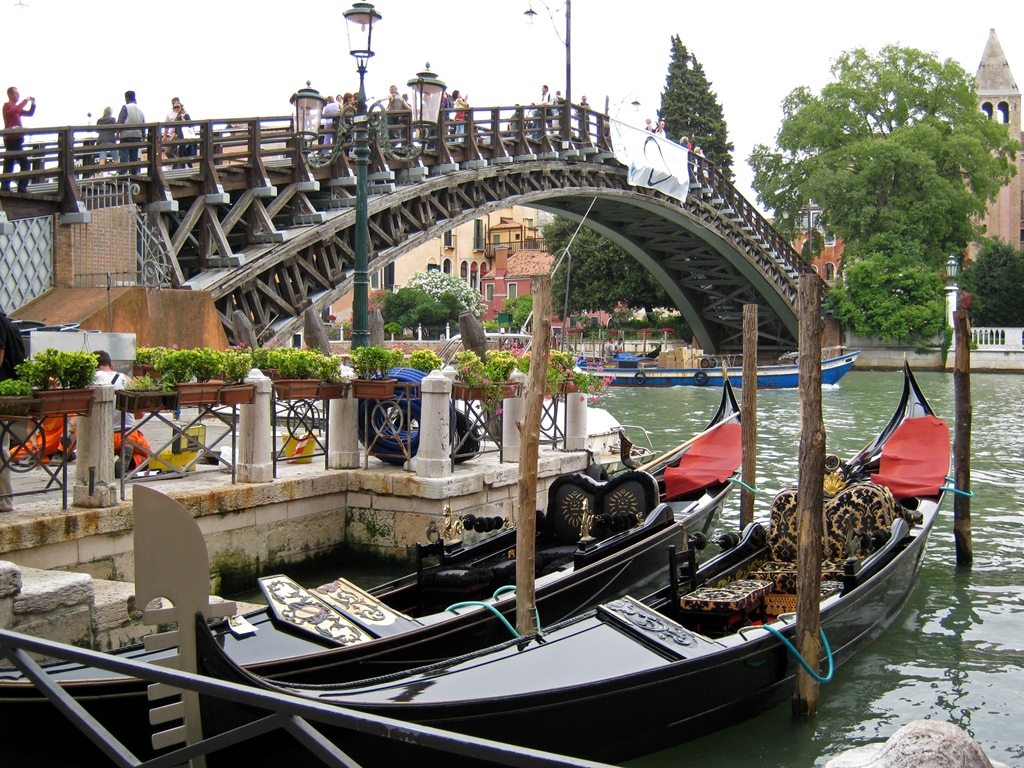
Accademia Bridge and Gondolas

Around the Accademia Bridge
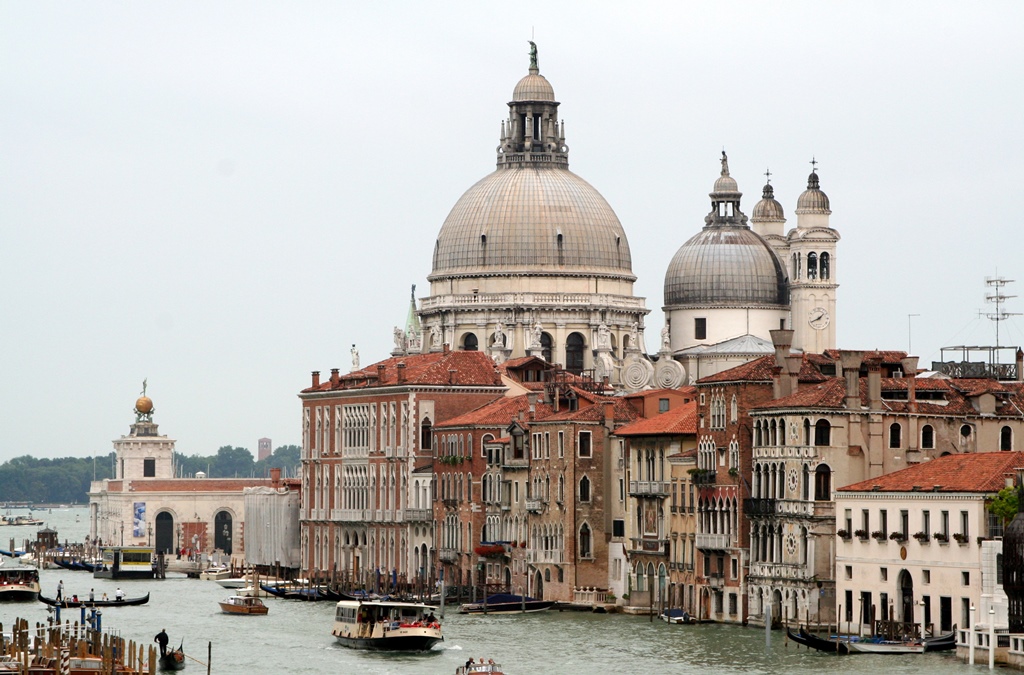
Santa Maria della Salute from Accademia Bridge
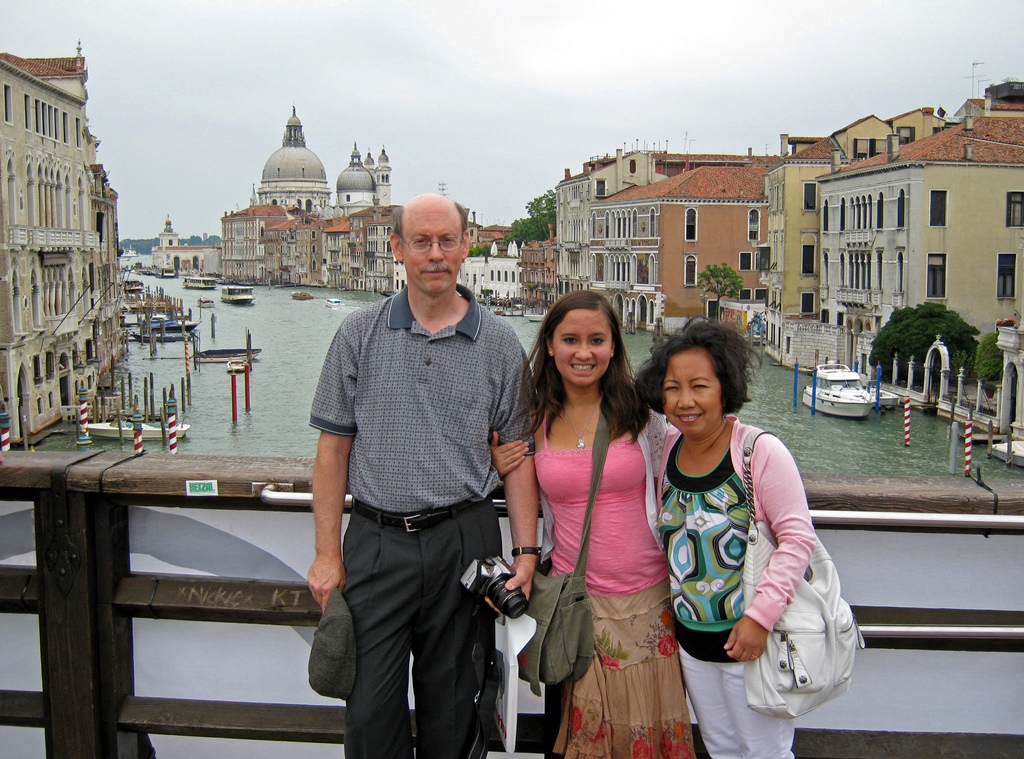
On the Accademia Bridge
View from the Accademia Bridge
After crossing the bridge, we were startled to see a few young African men sprinting
toward the bridge carrying large bundles wrapped in what looked like bedsheets. A
few seconds later we saw an official-looking Italian man running after them. This
was probably an attempt to enforce the law against the sale of counterfeit
merchandise. Occasionally when walking around in Venice, one sees vendors with
designer handbags, wallets, etc. arrayed on bedsheets. It's pretty clear the
merchandise is bogus – real designers sell their stuff in their stores, of which
there are plenty in Venice, and not on bedsheets. The bedsheets, besides protecting
the merchandise from the ground, also make it easy for the vendors to quickly pick
up everything and move out, in a hurry if necessary. The vendors we saw were most
likely converging from different sales locations to reach some sort of refuge on the
other side of the canal. This is probably an ongoing game between the lawbreakers
and the law enforcers. We never saw how this turn played out. We continued across
the bridge and headed toward San Marco, where we would be looking for our next
destination - the Doge's Palace.

